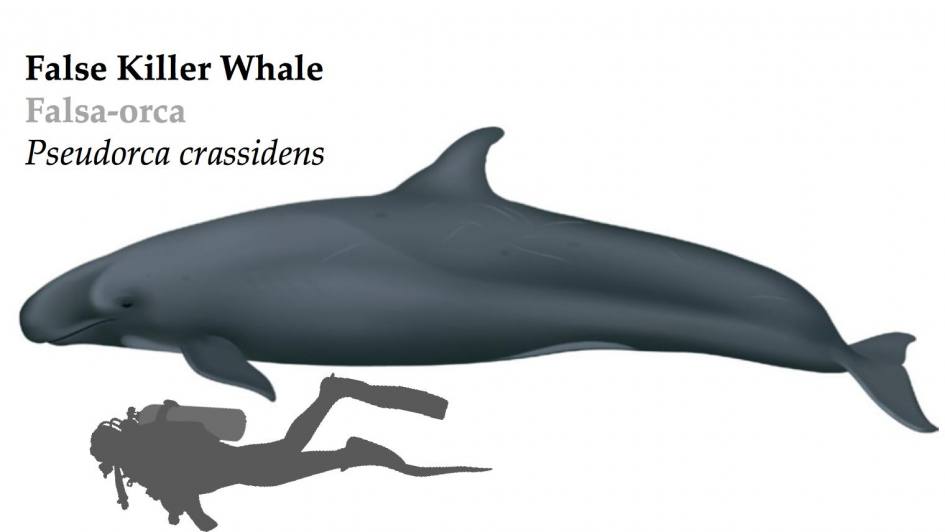
False Killer Whale (Pseudorca crassidens) are named from the similarities in skull morphology with the ‘actual’ Killer Whale. Due to the conical shaped teeth, False Killer Whales are given the scientific name « crassidens », meaning « thick-tooth ». They are a member of the dolphin family and are also known as Black Fish. The Black fish family (named from their black skin color) also includes Killer Whale (Orcinus orca), Pilot Whales (Globicephala spp.), Pigmy Killer Whale (Feresa attenuata) and Melon-headed Whale (Peponocephala electra).
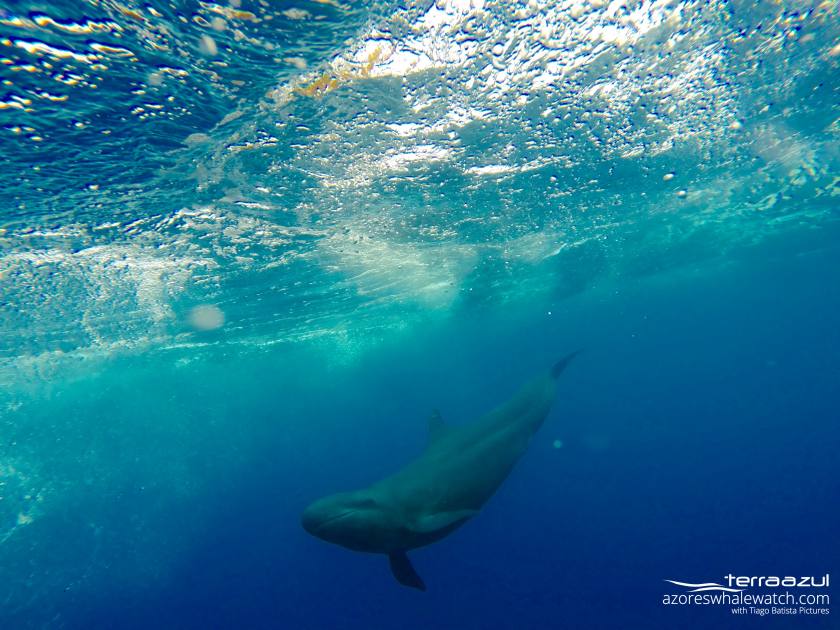
CHARACTERISTICS
- Latin name : Pseudorca crassidens
- Suborder : Odotonceti
- Family: Delphinidae
- Length : up to 6 m
- Weight : up to 1 600 kg
- Dive time : up to 20 minutes
- Dive depth: up to 1000 m
- IUCN Status: Near threatened
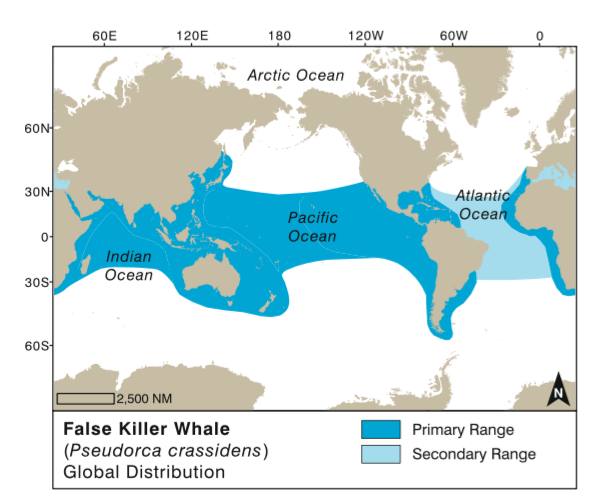
DESCRIPTION
Color: Uniformly black body. The underside has a thin white line running from the throat to the belly.
Head: elongated, tapered
Fins: Tall dorsal fin placed centrally on the back.
Teeth: 44 teeth in total
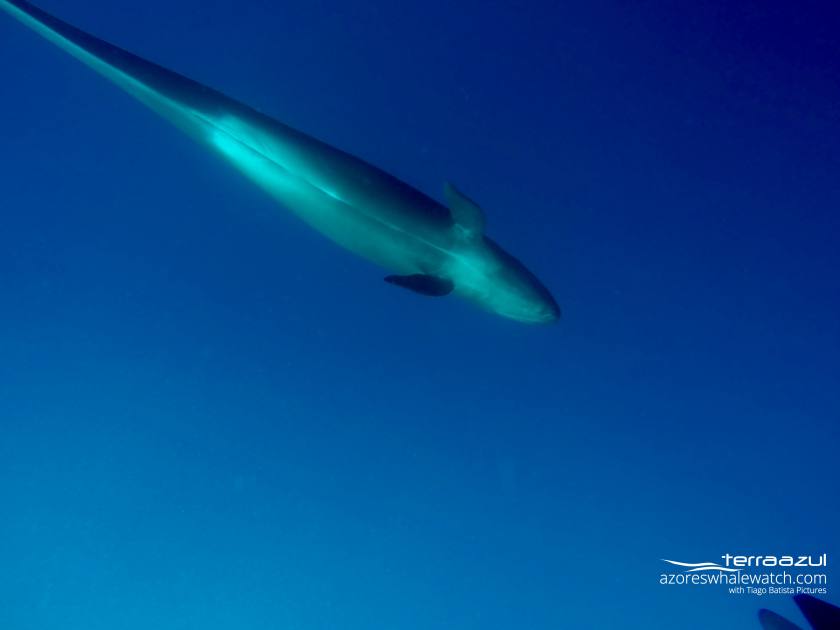
LIFE HISTORY
DIET
False killer whales are carnivores, primarily feeding on cephalopods and fish (e.g., billfish, tuna). They are also opportunistically feeding on small marine mammals. They eat up to 5% of their body weight per day. Individuals have been observed sharing food at the surface with members of the group.
REPRODUCTION
Sexual maturity is reached at the age of 8-12 years (females) and 8-10 years old (males).The gestation lasts about 11-16 months and occurs once every 6-7 years. At birth, calves measure around 1.5 meter in length. Matting appears to occur all year, with peaks around January-February and March.
SOCIAL BEHAVIOR
False Killer Whales are usually found in mixed age and sex groups of 10-30 individuals. False killer whales are active swimmers when they are traveling or feeding. They are known to leap out of water and perform flips on special occasions such as social events.
VOCAL BEHAVIOR
False Killer Whales have a very wide variety of echolocation clicks. They are also communicated by whistles, squeals. You can listen a False Killer Whale echolocation pattern in this recording collected by the Team of Terra Azul.












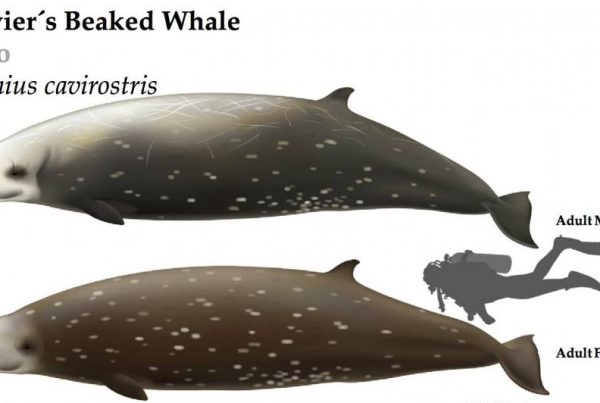
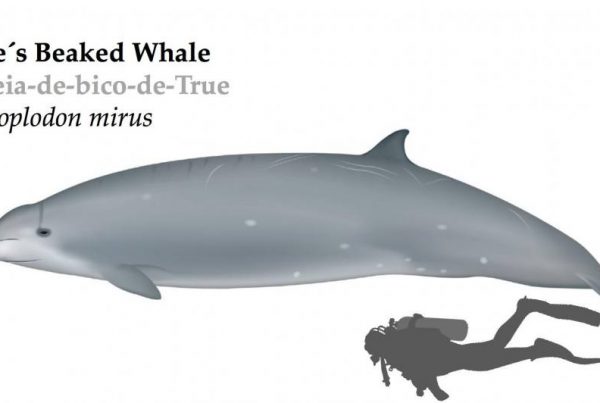
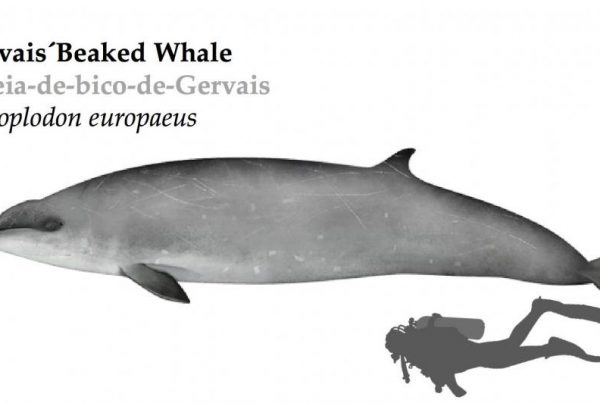



Your thoughts on this?